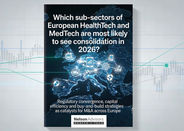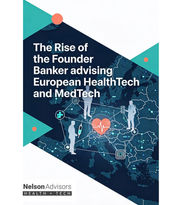Taker-Shaper-Maker model and Future of Generative AI in Healthcare
- Lloyd Price
- Apr 27, 2024
- 5 min read

Exec Summary:
Generative AI is a powerful new tool with the potential to revolutionize healthcare. It can be used to create new drugs, develop personalized treatment plans, and even generate synthetic medical data. But how can healthcare organisations best leverage this technology?
A framework called the "Taker-Shaper-Maker" model can be used to describe how organisations can adopt generative AI.
Takers
Takers are the early adopters who use existing generative AI models for basic tasks.
In healthcare, this might involve using a large language model to generate reports, automate administrative tasks, or answer basic patient questions.
Shapers
Shapers go beyond using existing models and develop generative AI solutions specifically for healthcare.
For example, a shaper might create a generative AI model that can analyze medical images and identify potential abnormalities.
Makers
Makers are the pioneers who are developing entirely new generative AI technologies for healthcare.
This might involve creating new algorithms for drug discovery, developing AI-powered surgical robots, or using generative AI to personalise treatment plans.
The Taker-Shaper-Maker model can help healthcare organizations decide how to best adopt generative AI. By understanding their own needs and capabilities, organisations can choose the level of adoption that is right for them.
Here are some of the ways that generative AI is being used in healthcare today:
Drug discovery: Generative AI can be used to identify new drug targets and design new drug molecules. This can help to speed up the drug discovery process and bring new treatments to patients faster.
Personalised medicine: Generative AI can be used to analyse a patient's individual data, such as their genes and medical history, to develop a personalised treatment plan. This can lead to more effective treatments and better outcomes for patients.
Medical imaging: Generative AI can be used to create synthetic medical images, such as X-rays and MRIs. This can be used to train medical imaging algorithms and reduce the need for real-world patient data.
Clinical trial design: Generative AI can be used to design more efficient and effective clinical trials. This can help to bring new drugs and treatments to market faster.
Generative AI has the potential to transform healthcare. By using this technology in innovative ways, healthcare organisations can improve patient care, reduce costs, and accelerate the development of new treatments.
Mergers, Acquisitions, Growth and Strategy for Healthcare Technology companies
HealthTech M&A - Buy Side, Sell Side, Growth & Strategy services for companies in Europe, Middle East and Africa. Visit www.nelsonadvisors.co.uk
HealthTech M&A Newsletter from Nelson Advisors - HealthTech, Health IT, Digital Health Insights and Analysis. Subscribe Today! https://lnkd.in/e5hTp_xb
Healthcare Technology Buy Side, Sell Side, Growth & Strategy services for Founders, Owners and Investors. Email lloyd@nelsonadvisors.co.uk
Healthcare Technology Thought Leadership from Nelson Advisors – Market Insights, Analysis & Predictions. Visit https://lnkd.in/ezyUh5i

Takers Shapers Makers Model
The Taker-Shaper-Maker model is a framework used to describe how organizations approach adopting new technologies, particularly generative AI (GenAI) in this case. It outlines three distinct levels of engagement:
Takers:
Focus: Utilize existing GenAI models "off the shelf"
Applications: Basic automation tasks, data analysis for initial insights.
Benefits: Improved efficiency, quicker access to basic information.
Example in Healthcare: A hospital uses a large language model (LLM) to generate patient reports or answer frequently asked questions.
Shapers:
Focus: Customize existing GenAI models for specific needs.
Applications: Develop tailored solutions, train models on specialized datasets.
Benefits: Deeper insights, improved decision-making, solutions addressing specific challenges.
Example in Healthcare: A healthcare provider trains a model on their patient records to identify individuals at high risk for certain diseases, allowing for early intervention.
Makers:
Focus: Develop entirely new GenAI models and tools.
Applications: Pioneering research and development, pushing the boundaries of GenAI in healthcare.
Benefits: Cutting-edge solutions, significant advancements in the field.
Example in Healthcare: A research institution creates a novel GenAI model that designs potential drug candidates based on specific disease targets.
Choosing the Right Approach:
The Taker-Shaper-Maker model helps healthcare organizations determine the most suitable GenAI adoption strategy. Factors like internal resources, technical expertise, and specific goals all play a role in this decision.
Limited resources: Starting as a Taker might be ideal, leveraging readily available models for basic tasks.
Specific needs: Shaping existing models can be a good fit for addressing unique challenges within the organization.
Advanced capabilities: Becoming a Maker requires significant investment in research and development, but offers the potential for groundbreaking advancements.
Ultimately, the Taker-Shaper-Maker model provides a framework for healthcare organisations to navigate the exciting world of GenAI and unlock its potential to improve patient care, streamline processes, and drive innovation in the healthcare sector.

Taker-Shaper-Maker model and future of Generative AI in Healthcare
The Taker-Shaper-Maker model offers a valuable lens to examine how Generative AI (GenAI) will shape the future of healthcare. Here's how each category plays a role:
Takers: Early Adopters, Efficiency Boosters
Impact: Takers will be the initial wave of GenAI adoption in healthcare. They'll leverage pre-built models for tasks like:
Automated report generation from patient data, freeing up clinicians' time.
Virtual assistants answering basic patient questions, improving accessibility.
Data analysis to identify trends and patterns, aiding in resource allocation.
Future: As GenAI tools become more user-friendly, the number of Takers will increase. This will lay the groundwork for wider acceptance and exploration of GenAI's potential.
Shapers: Tailoring for Transformation
Impact: Shapers will be the true innovators, customizing existing GenAI models for specific healthcare needs. This could involve:
Developing AI-powered diagnostics trained on vast medical datasets to improve accuracy and speed of diagnosis.
Creating personalized treatment plans by analyzing a patient's unique genetic makeup and medical history with GenAI.
Optimizing drug discovery by using GenAI to design and test new drug candidates, accelerating the process.
Future: Shapers will play a pivotal role in driving the practical application of GenAI in real-world healthcare settings. They'll bridge the gap between theoretical possibilities and tangible benefits for patients and clinicians.
Makers: Pushing the Boundaries
Impact: Makers will be the pioneers, developing entirely new GenAI models and tools. They'll focus on:
Creating AI-powered surgical robots with enhanced precision and minimal invasiveness.
Generating synthetic medical data for training algorithms and reducing reliance on real patient data.
Developing AI for preventative healthcare by predicting potential health risks and enabling early intervention.
Future: Makers will be responsible for the most transformative advancements in healthcare with GenAI. Their work has the potential to revolutionize disease diagnosis, treatment, and ultimately, patient outcomes.
The Takeaway: A Collaborative Future
The Taker-Shaper-Maker model highlights the interconnected nature of GenAI adoption in healthcare. Takers pave the way, Shapers translate potential into practical solutions, and Makers push the boundaries of what's possible. Collaboration between these groups will be crucial to unlocking the full potential of GenAI and shaping a healthier future for all.
Mergers, Acquisitions, Growth and Strategy for Healthcare Technology companies
HealthTech M&A - Buy Side, Sell Side, Growth & Strategy services for companies in Europe, Middle East and Africa. Visit www.nelsonadvisors.co.uk
HealthTech M&A Newsletter from Nelson Advisors - HealthTech, Health IT, Digital Health Insights and Analysis. Subscribe Today! https://lnkd.in/e5hTp_xb
Healthcare Technology Buy Side, Sell Side, Growth & Strategy services for Founders, Owners and Investors. Email lloyd@nelsonadvisors.co.uk
Healthcare Technology Thought Leadership from Nelson Advisors – Market Insights, Analysis & Predictions. Visit https://lnkd.in/ezyUh5i



















































Comments